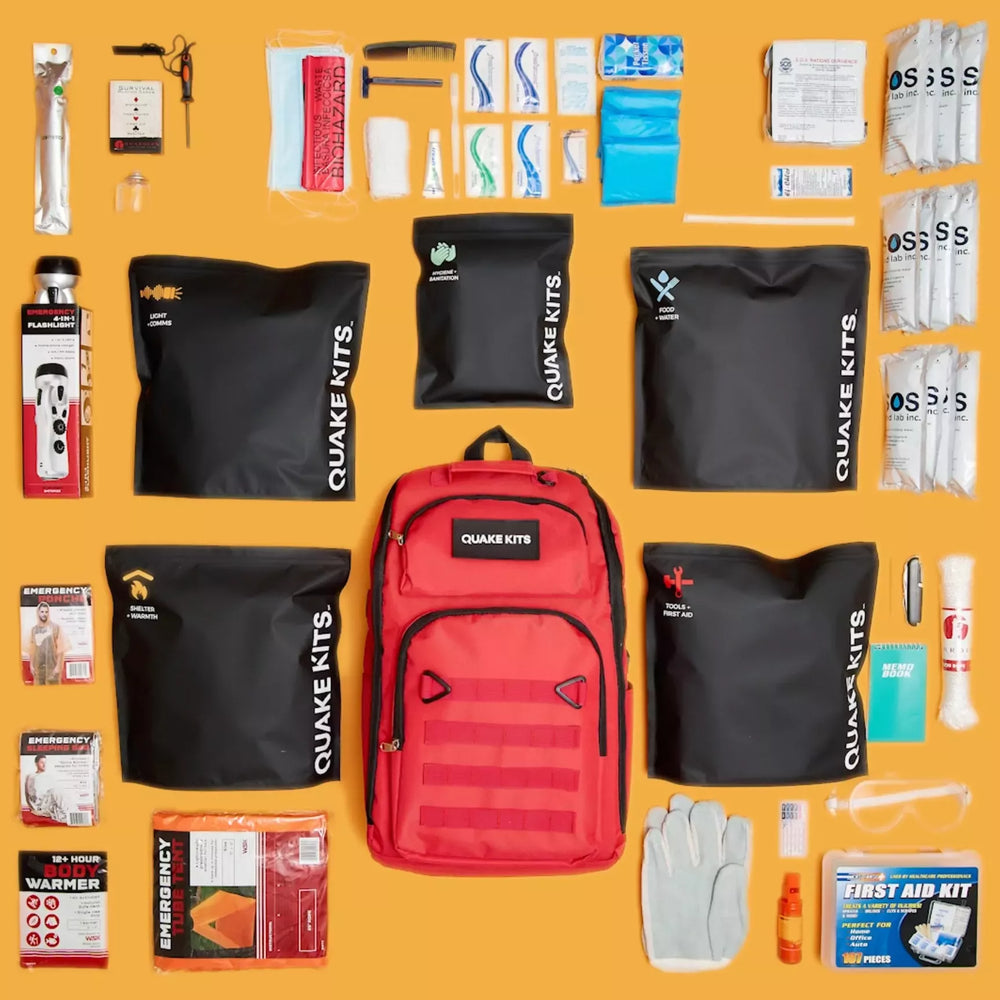Herramientas y suministros de supervivencia caseros: bolas de algodón, vaselina y más
Herramientas y suministros de supervivencia caseros: bolas de algodón, vaselina y más
En materia de preparación para emergencias, fabricar tus propias herramientas de supervivencia con objetos cotidianos puede marcar la diferencia. Estas herramientas caseras no solo suelen ser económicas y fáciles de conseguir, sino que también pueden ser increíblemente efectivas en caso de necesidad. En este artículo, exploraremos algunas herramientas y suministros sencillos pero potentes que puedes crear con artículos domésticos comunes como bolas de algodón, vaselina y otros.
Suministros esenciales para la supervivencia en el bricolaje
Analicemos algunos de los elementos clave que pueden reutilizarse como herramientas de supervivencia:
- Bolas de algodón y vaselina : Estos dos elementos pueden crear un iniciador de fuego eficaz, fácil de preparar y almacenar.
- Papel de aluminio : versátil y compacto, se puede utilizar para cocinar, para hacer señales o incluso como recipiente improvisado.
- Cinta adhesiva : Esta herramienta multiusos es perfecta para reparaciones rápidas, la construcción de refugios o incluso para hacer un vendaje en caso de emergencia.
- Botellas de plástico : Las botellas de agua vacías se pueden transformar en recipientes, filtros o incluso herramientas para la señalización y la comunicación.
Paso 1: Prepara un iniciador de fuego con algodón y vaselina
Una de las herramientas caseras más útiles que puedes crear es un encendedor de fuego. Es sencillo, portátil y funciona bien en diversas condiciones. Aquí te explicamos cómo hacer uno:
- Reúne los materiales : necesitarás bolas de algodón y vaselina. Si piensas guardarlas durante un tiempo prolongado, ten a mano una bolsa o recipiente pequeño con cierre hermético.
- Preparación de las bolas de algodón : Tome una bola de algodón y cúbrala bien con vaselina. Asegúrese de que esté completamente empapada, pero sin que gotee.
- Almacenamiento : Guarda las bolas de algodón impregnadas en una bolsa de plástico resellable o en un viejo bote de película fotográfica. Llévalas en tu kit de supervivencia para tener un iniciador de fuego fiable dondequiera que vayas.
Consejo práctico : Para usarlo, simplemente separa las fibras del algodón y enciéndelo con una chispa o un encendedor. La vaselina hará que el algodón arda durante más tiempo, dándote tiempo suficiente para encender una fogata.
Paso 2: Construir un refugio casero con cinta adhesiva y plástico
La cinta adhesiva y las láminas de plástico pueden salvar vidas en una emergencia donde el refugio es esencial. Aquí te mostramos cómo crear un refugio improvisado:
- Encuentra o crea una estructura : Busca ramas resistentes o incluso utiliza tu entorno, como rocas o árboles caídos, para crear una estructura que sirva de refugio.
- Extienda la lona de plástico : Use una lona de plástico o bolsas de basura grandes abiertas y extendidas sobre el marco.
- Fija con cinta adhesiva : Pega los bordes de la lámina de plástico con cinta adhesiva para asegurarla en su lugar. También puedes usar cinta adhesiva para tapar agujeros o huecos, creando así un espacio más impermeable.
Dato curioso : ¡La cinta adhesiva es lo suficientemente resistente como para construir una tienda de campaña completa si tienes suficiente! Considera guardar un par de rollos en tu kit de supervivencia para mayor versatilidad.
Paso 3: Papel de aluminio para cocinar y reflectores de señales
El papel de aluminio puede ser de gran utilidad en una situación de supervivencia. Aquí tienes algunos de sus usos prácticos:
- Cocina : Utiliza papel de aluminio para cocinar alimentos sobre fuego directo envolviéndolos alrededor de verduras, carne o incluso pescado. También puedes improvisar una sartén para freír.
- Señalización : La superficie brillante del papel de aluminio refleja la luz solar y puede usarse como señal de emergencia. Basta con agitarlo para llamar la atención de los rescatistas o transeúntes.
- Recipiente para agua : En caso de apuro, el papel de aluminio puede contener agua. Dóblalo en forma de cuenco y úsalo para recoger agua de lluvia o nieve para beber.
Consejo práctico : Incluye unas cuantas hojas de papel de aluminio en tu kit de supervivencia; es ligero, no ocupa mucho espacio y tiene numerosas aplicaciones para la supervivencia.
Paso 4: Utilización de botellas de plástico para la recolección y filtración de agua
Las botellas de plástico suelen ser fáciles de conseguir y pueden tener múltiples usos en situaciones de supervivencia:
- Filtración de agua : Crea un filtro de agua sencillo colocando capas de arena, carbón vegetal y grava dentro de una botella de plástico. Haz unos pequeños agujeros en la tapa para que el agua filtrada gotee.
- Recolección de agua : Utilice una botella para recolectar agua de lluvia o nieve derretida. Esto es especialmente útil en zonas donde el agua escasea o está contaminada.
- Silbato de señalización : En caso de emergencia, se puede cortar la botella para crear un silbato, que puede utilizarse para llamar la atención.
Consejo rápido : Siempre que sea posible, utilice botellas transparentes para la recolección de agua, ya que también pueden servir como destilador solar para la purificación básica del agua.
Almacena y rota tus herramientas de supervivencia caseras
Ahora que has construido estas herramientas de supervivencia caseras, es crucial almacenarlas adecuadamente:
- Etiqueta y fecha : Como con cualquier equipo de supervivencia, etiqueta cada herramienta con la fecha de fabricación. Esto es especialmente útil para artículos perecederos como las bolitas de algodón para encender fuego.
- Inspeccione regularmente : Revise sus suministros periódicamente para asegurarse de que aún funcionan correctamente. Reemplace cualquier artículo que muestre signos de desgaste o que haya caducado.
- Empaca de forma inteligente : Guarda tus herramientas de bricolaje en un kit de supervivencia específico para tenerlas a mano cuando las necesites. Usa bolsas resellables para mantener organizados artículos como cinta adhesiva y papel de aluminio.
TL;DR
Crear tus propias herramientas de supervivencia con artículos cotidianos como bolas de algodón, vaselina, cinta adhesiva y botellas de plástico te ayudará a estar preparado para situaciones inesperadas. Estos artículos son fáciles de encontrar, económicos e increíblemente versátiles para tareas de supervivencia como encender fuego, construir refugios, cocinar y recolectar agua. Al incorporar estas herramientas caseras a tu kit de supervivencia, tendrás valiosos recursos a mano, listos para ayudarte a afrontar cualquier desafío que se presente.
Crear un kit de supervivencia casero es más que un simple ejercicio práctico: es un paso hacia la autosuficiencia y la preparación. Con estas herramientas sencillas, estarás equipado para afrontar emergencias con ingenio y resiliencia.






Dejar un comentario